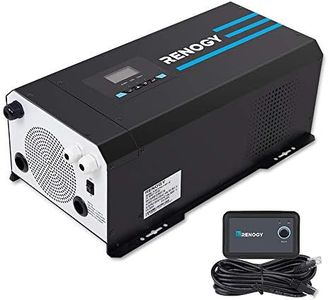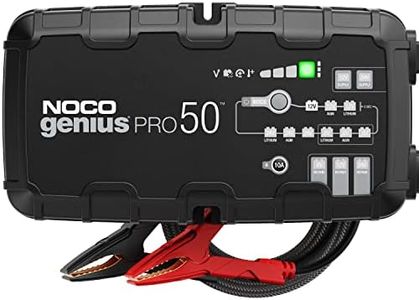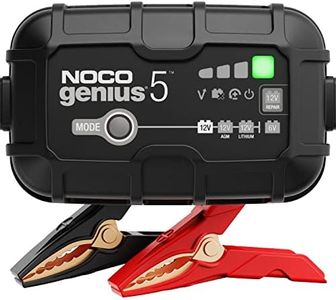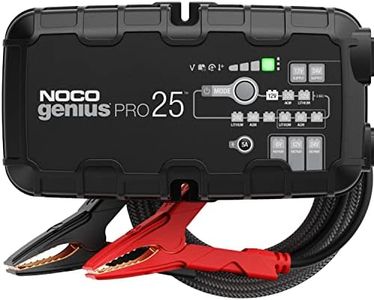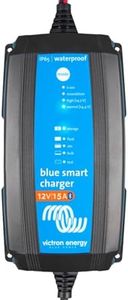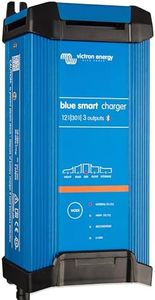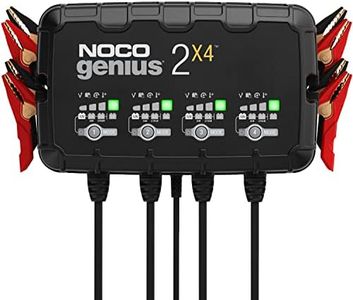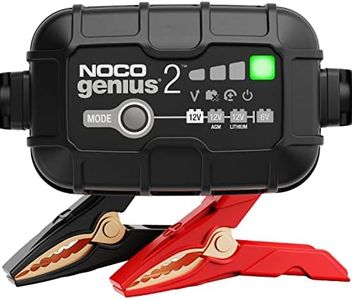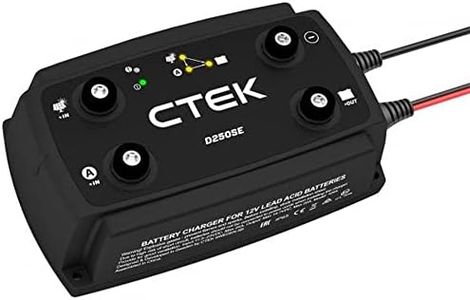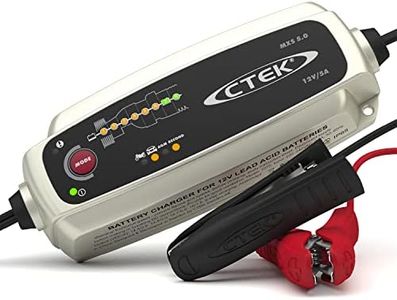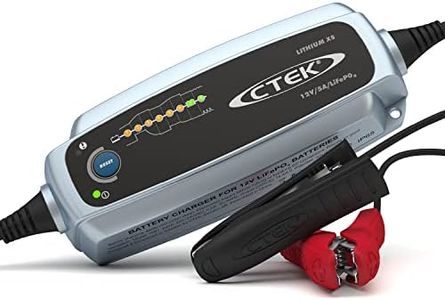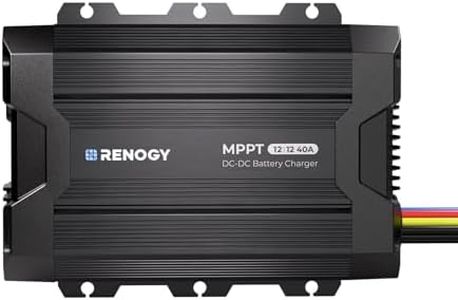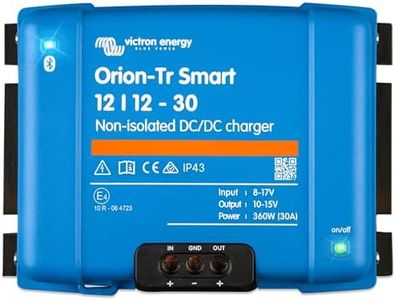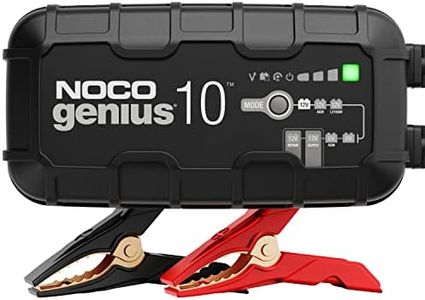We Use CookiesWe use cookies to enhance the security, performance,
functionality and for analytical and promotional activities. By continuing to browse this site you
are agreeing to our privacy policy
10 Best Rv Battery Chargers
From leading brands and best sellers available on the web.Buying Guide for the Best Rv Battery Chargers
Choosing the right RV battery charger is crucial to ensure your battery remains healthy, lasts longer, and delivers the power your RV needs while traveling or camping. Since your battery is a key component for lighting, appliances, and comfort systems, your charger selection should focus on compatibility, safety, and efficient charging performance. Think about how and where you will use your RV—whether for occasional weekend getaways or extended road trips—as this impacts the kind of charger that will fit your needs best. Understanding key charger specs will help you navigate the options and pick one that maintains your battery in top condition with minimal hassle.Charging Amperage (Charge Rate)Charging amperage refers to how quickly the charger can restore power to your RV battery, measured in amps. Higher amperage means faster charging; for example, a 20-amp charger charges faster than a 5-amp charger. However, too high an amperage for your battery type and capacity can damage it, while too low takes a lot longer. Small, occasional-use RVs often do well with lower amperage (5-10A), which is gentle and preserves battery life. Medium use or multiple batteries usually means looking at mid-range chargers (15-20A), while larger rigs or frequent off-grid users may need higher amperage (25A and above). Always match or stay below the battery manufacturer’s recommended amperage for best results.
Charger Type (Converter, Smart/Automatic, Manual)RV battery chargers come in different types: basic/manual chargers simply provide a steady current and rely on you to disconnect them, while smart/automatic chargers sense the battery’s condition and adjust output accordingly, protecting against overcharging. Converter chargers can also provide DC power directly to your RV while charging. For most users, a smart charger is the safest and most convenient, as it optimizes charging automatically and prevents damage. Manual chargers are best only for those who closely monitor their batteries. If you spend a lot of time plugged in or use shore power, a converter/charger combo might be the best fit.
Battery Compatibility (Type Supported)RV batteries come in different types, such as lead-acid (flooded, AGM, gel) or lithium. Chargers must match your battery type. Some chargers are specialized for one kind, while others offer settings for multiple types. Choosing a compatible charger is crucial for battery health—a charger not matched with lithium, for example, can undercharge or damage it. Check what kind of batteries your RV uses, and pick a charger that is rated for that battery type. If you think you might change battery types in the future, a multi-type charger is a flexible choice.
Charging Stages (Single, Dual, or Multi-Stage)Charging stages refer to the way a charger delivers current: single-stage chargers just apply a constant current, which can be less gentle on batteries and increase wear. Multi-stage chargers (often called three-stage or smart chargers) slowly fill the battery, tapering output as the battery nears full, and can switch to a 'trickle' mode to maintain full charge without overcharging. Multi-stage is best for preserving battery life and efficiency, especially if you regularly leave your RV plugged in. Single-stage is typically only suitable for occasional, manual use.
Input Power Source (AC, DC, Solar Compatible)This spec shows what your charger plugs into for power. Most chargers run on standard AC (from a wall outlet or generator), some can work from a DC power source, and a few are compatible with solar panels. If you spend most time at powered campsites, a regular AC charger is sufficient. If you boondock or want to charge from your solar panels, choose a charger that accepts DC/solar input or has a solar charging function.
Portability and InstallationSome chargers are built-in and permanently installed, while others are portable and can be used when needed or stored away. Built-in chargers are convenient for frequent travelers and those with dedicated RV setups, while portable chargers offer flexibility for occasional use or when you have multiple battery banks to maintain. Decide based on how permanent your setup should be and how many batteries you’ll be maintaining.
Safety FeaturesSafety features such as reverse polarity protection, spark-proof technology, and short-circuit protection make using your charger much safer, particularly in an RV environment where conditions can vary. For peace of mind and to prevent accidental battery damage or fires, it’s wise to pick a charger that clearly lists key safety features.
